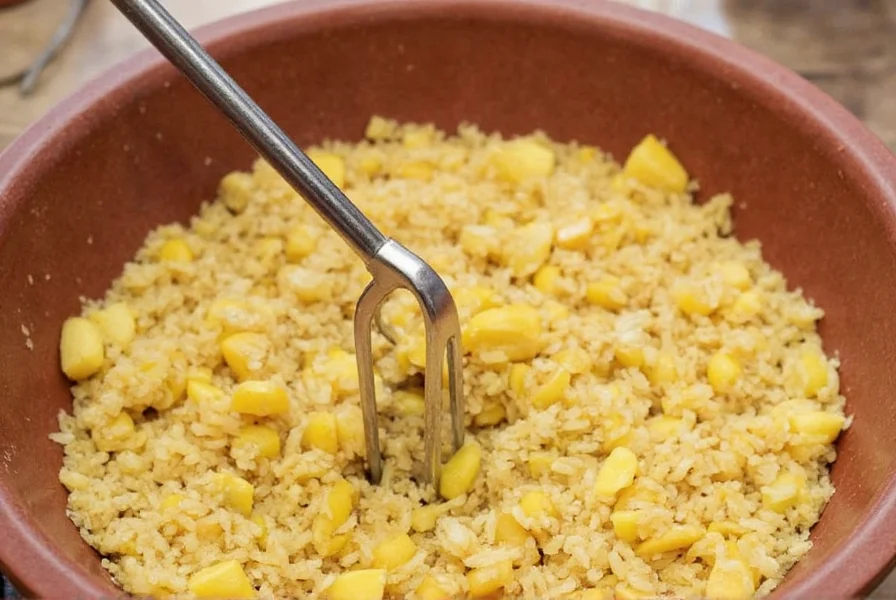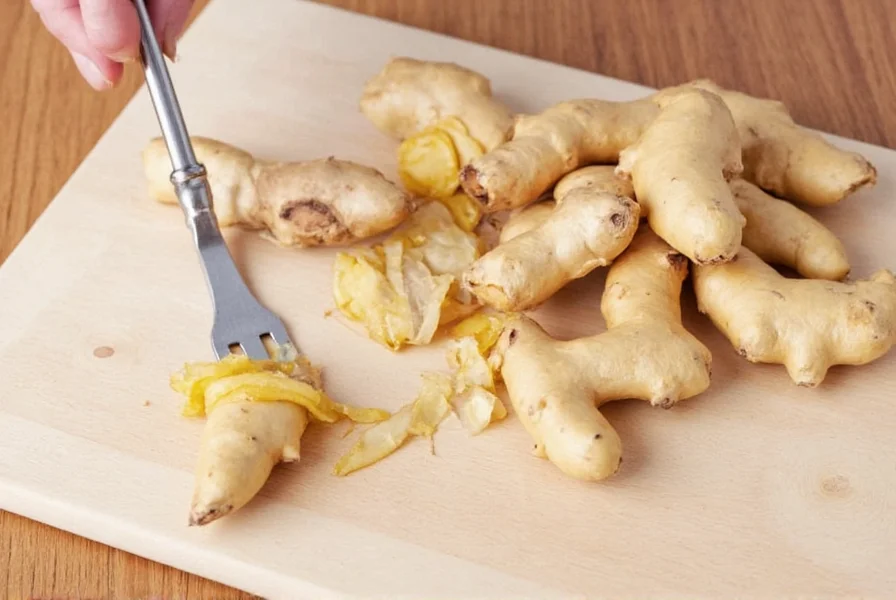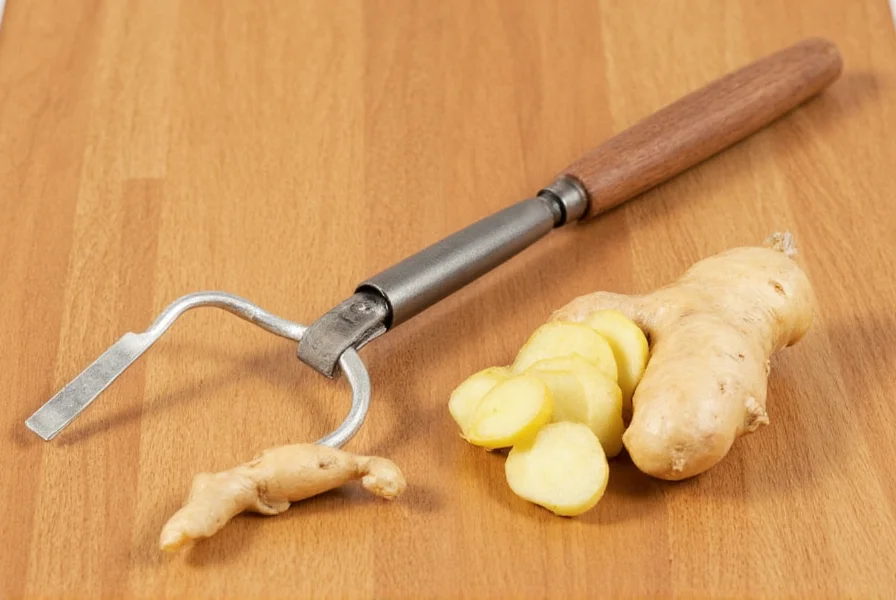Many gardeners searching for information about "ginger and fork" are actually looking for details about this specialized harvesting tool. The confusion often stems from the similar-sounding terms, but understanding the proper tool for ginger cultivation makes all the difference in successful harvests.
What Exactly Is a Ginger Fork?
A ginger fork is a specialized gardening implement designed specifically for harvesting ginger root crops. Unlike standard garden forks or spading forks, ginger forks feature several distinctive characteristics:
- Longer, thinner tines (typically 8-10 inches long)
- Narrower tine spacing to prevent root damage
- Lightweight construction for precision work
- Ergonomic handles for comfortable use in tight spaces
- Slightly curved tines to follow ginger root growth patterns
These design elements work together to allow gardeners to carefully loosen the soil around ginger rhizomes without piercing or bruising them—a common problem when using conventional gardening tools.

Why Regular Garden Tools Damage Ginger Roots
Ginger root systems present unique harvesting challenges that standard tools can't address effectively. Ginger grows as rhizomes—horizontal underground stems that produce roots downward and shoots upward. These rhizomes grow in delicate, interconnected networks close to the soil surface.
When using conventional garden forks or shovels:
- Broad tines often pierce through valuable rhizomes
- Wide spacing misses smaller root sections
- Heavy construction compacts soil around roots
- Blunt edges tear rather than separate roots
Studies show that improper harvesting techniques can damage up to 40% of a ginger crop, significantly reducing both yield and shelf life of the harvested roots.
Proper Technique for Using a Ginger Fork
Using a ginger fork correctly requires specific technique to maximize your harvest:
- Begin harvesting when leaves yellow (typically 8-10 months after planting)
- Clear soil from around plant base to locate main rhizome
- Insert fork vertically 4-6 inches from plant stem
- Gently push handle forward to loosen soil
- Work around plant in a circular pattern
- Lift soil and roots gradually with minimal disturbance
- Hand-remove remaining soil rather than shaking
| Tool Type | Root Damage | Harvest Efficiency | Best For |
|---|---|---|---|
| Ginger Fork | 5-10% | 90-95% | Home gardens, small-scale harvests |
| Standard Garden Fork | 25-40% | 60-70% | Soil preparation, not harvesting |
| Hand Harvesting | 2-5% | 30-40% | Tiny plantings, container gardening |
| Mechanical Harvesters | 15-25% | 95-98% | Commercial operations |
Alternative Tools When a Ginger Fork Isn't Available
While a dedicated ginger fork provides optimal results, several alternatives can work in a pinch:
- Hand trowel with narrow blade: Offers precision but requires more time and effort
- Root lifter: Similar design but typically heavier than specialized ginger forks
- Modified cultivator: Can work if tines are sufficiently narrow and spaced
- Three-pronged cultivator: Better than standard forks but not ideal
For container-grown ginger, many gardeners find that carefully tipping the entire pot and gently removing soil by hand provides the best results without specialized tools.

Selecting the Right Ginger Fork for Your Needs
When shopping for a ginger fork, consider these factors to ensure you get the right tool:
- Tine length: 8-10 inches provides optimal reach for most ginger varieties
- Handle material: Wood offers comfort, fiberglass provides durability
- Weight: Lighter tools (1-2 lbs) allow for precision work
- Tine spacing: 1-1.5 inches between tines prevents root damage
- Overall length: 36-42 inches accommodates most gardeners' height
For raised beds or container gardening, consider a smaller version with 6-8 inch tines. Commercial growers often prefer stainless steel construction for longevity, while home gardeners might opt for carbon steel models that are more affordable.
Seasonal Considerations for Ginger Harvesting
The timing of your harvest significantly impacts which tool works best. Young ginger (harvested at 6-8 months) has tender skin that's easily damaged, requiring the most delicate approach. Mature ginger (10+ months) develops tougher skin but has more extensive root systems that need careful separation.
Soil moisture also affects tool selection. Harvesting in slightly moist (not wet) soil reduces resistance and makes the ginger fork more effective. Dry soil requires more force, increasing the risk of root damage even with proper tools.
Maintenance Tips for Your Ginger Fork
Proper care extends the life of your specialized tool:
- Clean soil from tines immediately after use
- Dry thoroughly to prevent rust
- Store in a dry location, preferably hung vertically
- Apply light oil coating before long-term storage
- Check for bent tines before each use
With proper maintenance, a quality ginger fork can last for many growing seasons, making it a worthwhile investment for serious ginger growers.
Common Misconceptions About Ginger Harvesting Tools
Several myths persist about harvesting ginger that can lead to poor results:
- Myth: Any garden fork works fine for harvesting ginger Reality: Standard forks cause significant root damage due to wider tine spacing
- Myth: The harder you push, the better the harvest Reality: Gentle, precise movements preserve root integrity
- Myth: All ginger varieties require the same harvesting technique Reality: Different cultivars have varying root structures requiring adjusted approaches
- Myth: Harvesting tools don't affect ginger's shelf life Reality: Damaged roots spoil significantly faster than intact ones
FAQ
Is a ginger fork different from a regular garden fork?
Yes, a ginger fork has longer, thinner tines with narrower spacing specifically designed to harvest delicate ginger rhizomes without damage. Regular garden forks have wider tines that often pierce through ginger roots during harvest.
Can I use a regular fork to harvest ginger?
While possible, using a standard garden fork typically damages 25-40% of your ginger crop. The wider tine spacing and heavier construction make it difficult to carefully extract ginger rhizomes without piercing or bruising them.
When should I harvest ginger using a ginger fork?
Harvest ginger when the leaves begin to yellow, typically 8-10 months after planting. For young ginger (6-8 months), use extra care as the skin is more delicate. The soil should be slightly moist but not wet for optimal harvesting conditions.
What's the proper technique for using a ginger fork?
Insert the fork vertically 4-6 inches from the plant stem, then gently push the handle forward to loosen soil. Work around the plant in a circular pattern, lifting soil gradually with minimal disturbance. Never pry or lever the tool, as this can damage rhizomes.
Where can I purchase a specialized ginger fork?
Specialized ginger forks are available through gardening specialty stores, online agricultural suppliers, and some larger nurseries. Look for tools specifically labeled for root crop harvesting with tine spacing of 1-1.5 inches and tine length of 8-10 inches.











 浙公网安备
33010002000092号
浙公网安备
33010002000092号 浙B2-20120091-4
浙B2-20120091-4